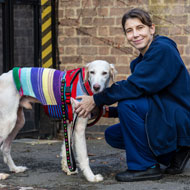Pre-purchase examinations of horses are often debated in the equine industry.
New research from the Royal Veterinary College (RVC) has revealed that lameness is the most common prejudicial finding in pre-purchase examinations (PPE) of horses.
Researchers examined 133 PPE certificates of a mixed, non-racing population of horses in an effort to study the merits of five-stage vetting (5SV) and two-stage vetting (2SV).
PPEs are performed by veterinary surgeons for prospective horse buyers, and are designed to identify prejudicial findings which may indicate the horse is unsuitable for its intended use. However, while PPEs usually follow a standardised process, they are often subjective and based on the veterinary surgeon’s opinion at that time.
The study examined PPE certificates from three first opinion practices, assessing the examination format, diagnostic imaging, purchase price, animal signalment, horse’s intended use, the outcome, and the findings.
The analysis revealed that 57.1 per cent of the horses examined had prejudicial findings, with lameness found as the primary prejudicial finding in 55.3 per cent of cases. Diagnostic imaging findings were found in 14.5 per cent of cases, respiratory system findings in 6.6 per cent of cases, with skin conditions and cardiac abnormalities each found in less than six per cent of cases.
The researchers also reviewed when different examination formats, whether 5SV or 2SV, were used to assess the horses.
It was found that 68.5 per cent of the horses underwent a 5SV, compared to 34.1 per cent taking a 2SV. Horses with a higher purchase price were found to be the most likely to undergo a 5SV, a well as being the most likely to have pre-purchase radiography and have prejudicial findings identified.
The researchers say that their findings could encourage further research into PPE formats, which could better inform prospective horse buyers.
Dr Jason Tupper, head of equine practice at the RVC, said: “A pre-purchase examination can discover a number of issues before buying a horse. This study reveals lameness to be the commonest issue.
“Few horses are perfect when it comes to temperament and health. The vetting process determines the issues and the vet can then help the purchaser weigh up their significance and decide if they can compromise and accept the issues or not."
The full study can be found in the Equine Veterinary Journal.
Image © Shutterstock






 The BSAVA has opened submissions for the BSAVA Clinical Research Abstracts 2026.
The BSAVA has opened submissions for the BSAVA Clinical Research Abstracts 2026.
